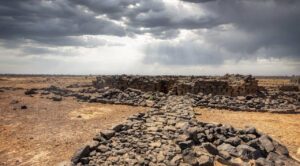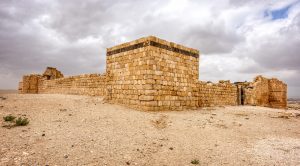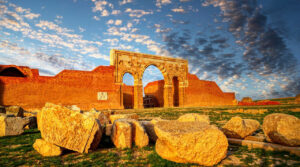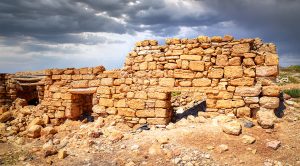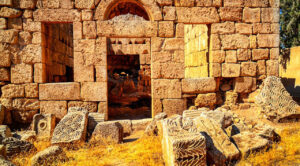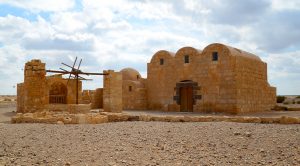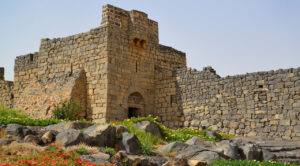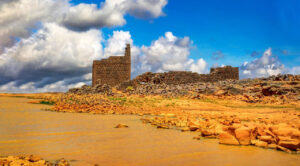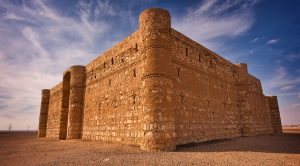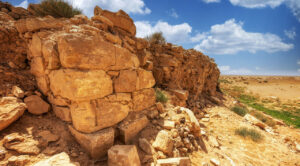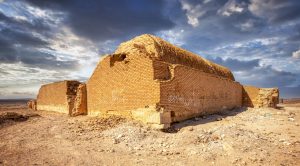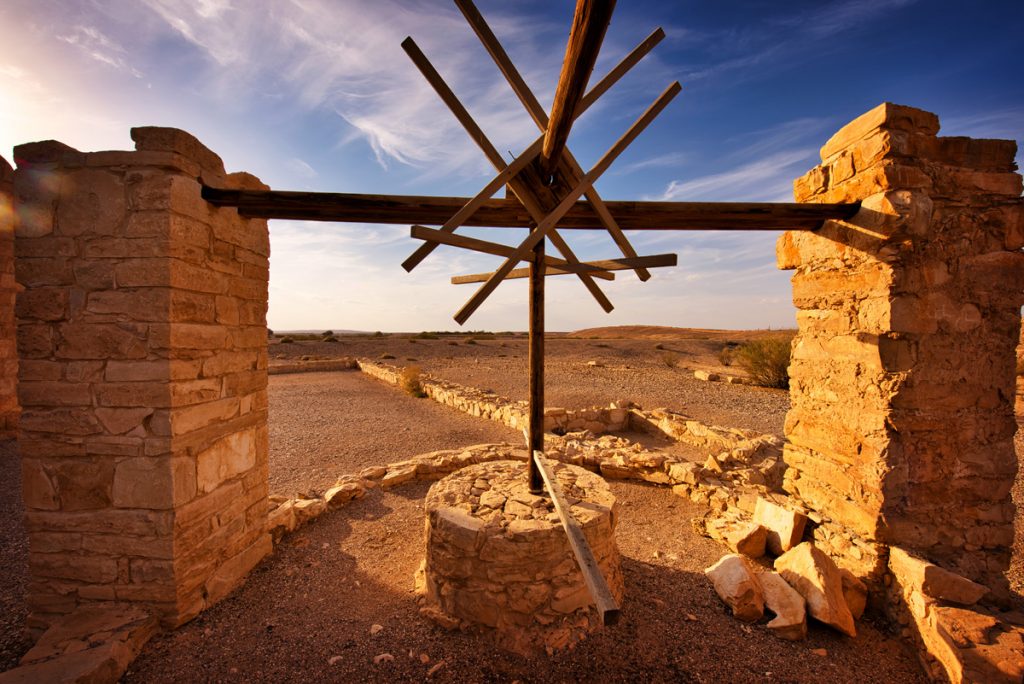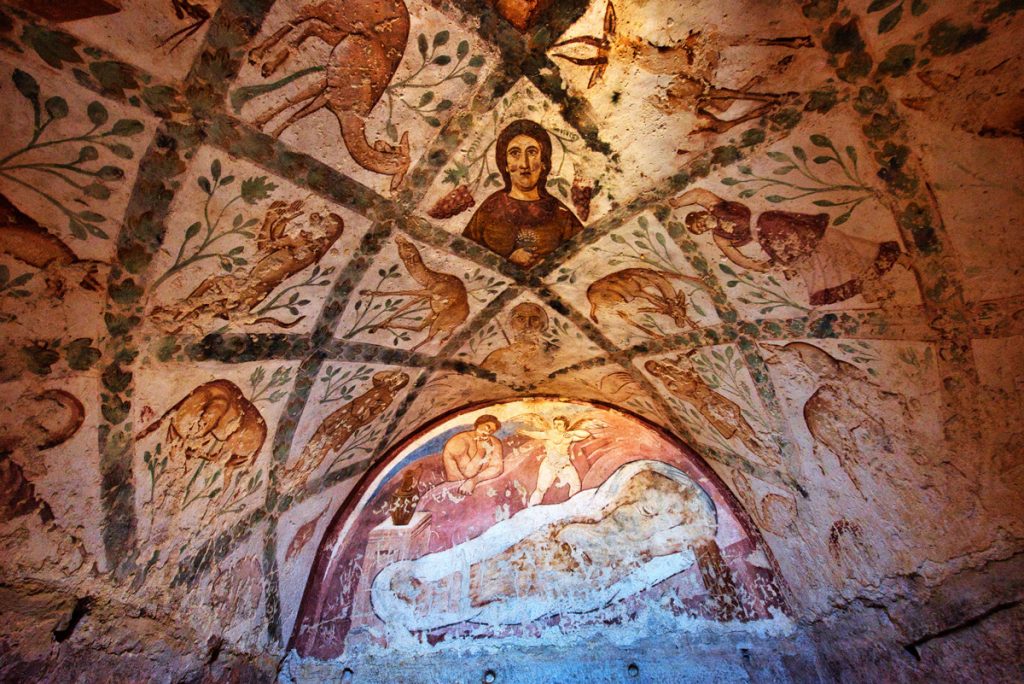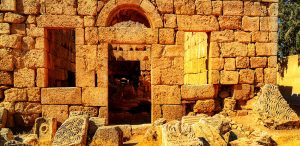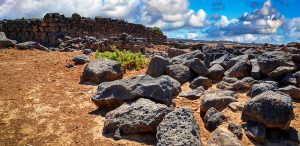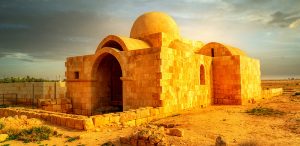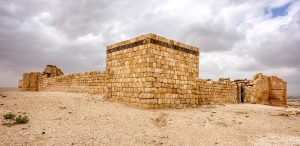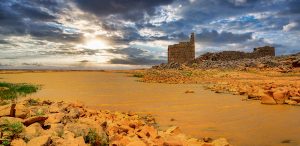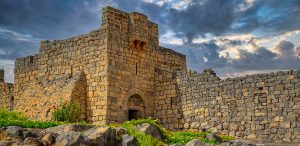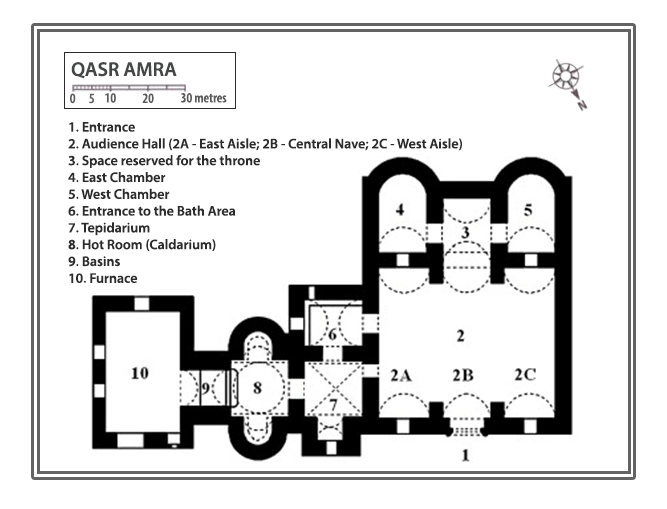Go back in time to the era of military campaigns and desert warfare as you explore Jordan’s imposing Desert Castles, many dating back to the first half of the 8th century. Their fine mosaics, frescoes, stone and stucco carvings and illustrations, inspired by the best in Persian and Graeco-Roman traditions, tell countless stories of life as it was during the eighth century. Called castles because of their imposing stature, the desert complexes served various purposes as caravan stations, agriculture and trade centres, resort pavilions and outposts that helped distant rulers forge ties with local Bedouins.
Qasr Amra, situated 75km East of Amman on highway 40, is one of the best-preserved monuments and is a UNESCO World Heritage Site. Its interior walls and ceilings are covered with lively frescoes, and two of the rooms are paved with colourful mosaics. The paintings include themes such as hunting, dancing, and musicians, bathing scenes, cupids, and personifications of history, philosophy and poetry.
Most of the buildings are still standing and can be visited. The plan of the building consists of 3 main elements: a rectangular audience hall with a throne alcove in the middle of the south side, a bath complex which comprises 3 rooms corresponding to the frigidarium, tepidarium and calidarium, i.e. the cold, warm and hot rooms respectively and the hydraulic structures which include an elevated water-tank, a masonry-lined deep well, and the apparatus for drawing water from the well into the water tank. Two feeder pipes drained water from the elevated tank to the shallow pool or fountain in the audience hall into a plastered tank, which stood above the furnace. Recent excavations by the Spanish Archaeological Mission discovered the foundations of a smaller courtyard castle.
The frescoes in all rooms but the caldarium reflect the advice of contemporary Arab physicians. They believed that baths drained the spirits of the bathers, and that to revive “the three vital principles in the body, the animal, the spiritual and the natural,” the bath’s walls should be covered with pictures of activities like hunting.
One of the six kings depicted is King Roderick of Spain, whose short reign dates the image, and possibly the building, to around 710. For a long time, archaeologists believed that sitting caliph Walid I was the builder and primary user of Qusayr Amra, but recently doubts have been cast. Now it is believed more likely that one of two princes who later became caliph themselves, Walid II or Yazid III, are more likely candidates for that role.
Both spent long periods away from Damascus, the Umayyad seat, before assuming the throne. Walid was known to indulge in the sort of sybaritic activities depicted on the frescoes, particularly sitting on the edge of pools listening to music or poetry. One time he was entertained by performers dressed as stars and constellations, suggesting a connection to the sky painting in the caldarium. Yazid’s mother was a Persian princess, suggesting a familiarity with that culture, and he too was known for similar pleasure-seeking.
The abandoned structure was re-discovered by Alois Musil in 1898, with the frescoes made famous in drawings by an Austrian artist named Mielich for Musil’s book. In the late 1970s, a Spanish team restored the frescoes. The castle was made a UNESCO World Heritage Site in 1985.

